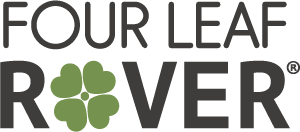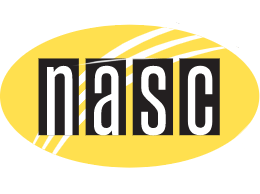The Best Omega-3 For Dogs

There are two families of essential fats for dogs: omega-3 and omega-6.
While omega-6 fatty acids are plentiful in most dogs' diets, no matter what they eat ... omega-3s are not.
Because omega-3s are fragile and break down quickly in the presence of heat, air or light, they're lacking in both the commercial and fresh foods that we feed our dogs.
While pet food labels may state that omega-3 essential fatty acids have been added, the reality is that the food will be deficient in omega-3 due to unavoidable exposure to air and light.
So, feeding a quality omega-3 supplement is therefore a good idea.
But which one is best to use? Fish oil omega-3s are commonly what you may think of for your dog. But are they the best source? The topic of omega-3s is not as simple as it sounds.
Is Fish Oil Bad For Dogs?
Unless you shop very carefully, fish oil can be bad for your dog. This is because of possible contamination, the way the oil was processed, as well as the type of fish it comes from. Let's take a more detailed look ...
The two best omega-3 fatty acids for dogs are eicosapentaenoic acid (EPA) and docosahexaenoic acid (DHA). These are found in the oils of fatty fish like salmon, sardines, and anchovies.
Cod liver oil also contains EPA and DHA, along with vitamins A and D. But the Environmental Protection Agency (EPA) recommends people eat no more than six 6 oz servings of cod per month due to mercury levels in this fish. And because the oil concentrates mercury in the liver, cod liver oil will contain even higher levels of mercury. So it’s safer to use fish body oils rather than those extracted from the liver.
Even so, contamination is still a concern. Ocean dwelling fish absorb toxins and heavy metals as they feed. So this means the larger fish at the top of the food chain contain more toxic compounds.
When buying any kind of fish oil, here are some considerations to keep in mind.
The Source Of Fish Oil Omega-3s
Look for an eco-friendly, sustainable source of fish oil. Most high-grade products are wild-caught, non-threatened smaller oily fish like anchovies, sardines, and mackerel.
And these guys feed off small plankton, from the deep clear Pacific waters off the coast of South America. So they sit lower on the food chain, with fewer toxins and mercury than larger fish.
Where The Fish Is Processed
The most reputable fish oil processing plants are in Norway. This is because they only process the smaller South American fish. So look for ”Product of Norway” on the label.
Smell And Taste
High-quality fish oil should have a very pleasant smell, whether in liquid form or capsule. The refining process has a great impact on smell and taste. The Norwegians have done extensive research on the development of good-tasting fish oil.
How The Fish Oil Is Distilled
When our mothers’ mothers made children take cod liver oil, it was in a time when producers didn’t have as many contaminants to worry about.
The fish oil was boiled in a still and separated from harder-to-boil materials like waxes, mercury and other pollutants that had different boiling points. The process was crude but it did the trick.
While many processes exist today, the preferable process is triple-phase molecular distillation, which is much gentler. The oil is placed under vacuum and then the omega-3s and pollutants like PCBs and mercury are boiled off at extremely low temperatures, molecule by molecule.
The EPA and DHA omega-3s are separated from toxins. The resulting product is then converted back to triglyceride form. This is a costly process but the fish oil is more stable.
It's also less likely to degrade and improves the bioavailability of the product. Companies using this process will freely share this information.
Avoid fish oil produced via the synthetic ethyl ester process, which is easier and cheaper. The distillation process uses ethanol to produce a higher concentration of EPA and DHA. But ethanol is a free radical and makes the fish oil unstable ... even though the oil may be more concentrated and contain a higher amount of omega-3s. Left in this form as ethyl ester, it is less bioavailable than the natural form of triglycerides.
Testing Your Fish Oil For Ethanol
A quick home test will show what kind of fish oil you have. Pour some of your fish oil into a styrofoam cup.
If the fish oil eats through the cup in 30 minutes or less, you may have fish oil with ethanol content. Also, if the container does not say natural triglyceride or TG from the fish oil, it is likely the ethyl ester form.
Caution With Salmon Oil
Salmon oil is very popular and is probably the first fish oil that comes to mind. But it may not be the healthiest option.
Farmed Vs Wild
Most of the salmon in grocery stores today are raised in fish farms. This makes it one of the most polluted foods our dogs eat.
Researchers analyzed farm-raised and wild salmon from eight regions around the world. The farm-raised salmon contained dangerous levels of PCBs and dioxins. They also found the insecticides dieldrin and toxaphene.
- PCBs, or polychlorinated biphenyls, are highly toxic and carcinogenic. PCBs were banned but you can still find them in the environment. The most likely source of exposure is eating contaminated fish.
- Fish and shellfish contain dioxins. These are a group of carcinogenic, chemically related compounds. The EPA’s guidelines for exposure to dioxin note that one meal of farmed salmon a month can pose unacceptable cancer risks.
- Dieldrin is a highly toxic, long-lasting insecticide, restricted by law to non-agricultural use.
- Toxaphene is a toxic solid polychlorinated camphene used as an insecticide. It was banned from use in the United States in 1990 because it is a suspected carcinogen.
Farmed fish contain higher concentrations of toxins because of what they're fed. They eat pellets made of fish meal from other types of fish. Fish oils are also added to this pelleted mix. The goal is to encourage rapid growth but it concentrates the amount of toxins in their bodies. The salmon farms also release large quantities of antibiotics into the water, as well as other chemicals generated during farming.
“Norwegian salmon” are not wild salmon but farm-raised. Farm-raised salmon can be high in the pro-inflammatory omega-6 fats and low in healthy omega-3s.
Wild-caught Alaskan salmon has a more favorable omega-3 to omega-6 ratio and fewer toxins.
Choosing A Certified Oil
Should you decide to use some fish oil omega 3s for your dog, look for one that has been certified. There are third-party testing and certification programs for fish oil that rate products based on the criteria of omega-3 content, contaminants, and stability of the product.
The International Fish Oil Standards Program (IFOS) has contracted Nutrasource Diagnostics (nutrasource.ca). They specialize in regulatory consulting, clinical trials and product testing. Enter the product, company or batch/lot number of your fish oil or select from almost 100 producers to get the IFOS rating of your fish oil.
If you buy salmon oil, make sure it's from wild-caught Alaskan salmon.
You need to think twice if the label says it's made from salmon caught in the pristine waters of Norway or the Atlantic Ocean.
RELATED: Learn 6 reasons fish oil is bad for dogs ...
Alternatives To Fish Oil For Dogs
EPA and DHA are two fatty acids in fish oil that are essential for cardiovascular function. They also support brain health and help prevent dementia. The richest sources are fatty fish but there are other alternatives as well.
Green-Lipped Mussel Oil
One of the best sources of EPA and DHA for dogs is green lipped mussel oil. Green lipped mussels are sustainably grown in clean New Zealand waters. Like fish oil, green lipped mussel oil is full of the EPA and DHA your dog needs. In fact it's better. Green lipped mussel oil has far more fatty acids ... 30, compared to just 2 in fish oil. And it contains ETA (eicosatetraenoic acid), another omega-3 fatty acid which can help support a normal inflammatory response. Your dog can convert ETA to EPA, which can help promote cartilage development and joint health.
Algae Oil
Data indicates that algae oil supplements are more concentrated in omega-3s. Algae are naturally high in DHA … so it's a sustainable alternative to fish oil. But algal oil contains only a small amount of EPA. Algae oil's DHA content makes it a good choice for puppies, seniors and dogs who need extra help with neural health or brain health.
Finding a trusted algae supplement is just as important as choosing a fish oil. Research the company and make sure you're dealing with the producer, not a third party or broker.
You want a product tested by a reputable, independent third party. And make sure it’s organically grown outdoors with plenty of natural sunlight. Just like fish oils, you want to avoid contaminants.
Plant Oils
Alpha-linolenic acid (ALA), is a short-chain omega-3 fatty acid. You can find ALA in walnuts, hemp and chia seeds, flaxseeds and soybeans. On its own, ALA is an inefficient source of DHA. That's because it must be converted first to EPA and then to DHA. Dogs can only convert about 20 percent of the ALA to DHA.
But you can combine crushed chia seeds and an algae supplement to get a healthy mix of ALA, DHA, and EPA.
- Crushed chia seeds: 1 teaspoon (small dogs) to 1 tablespoon (large dogs) per day
- Walnut Oil: 1 teaspoon to 1 tablespoon a day, according to your dog’s size as above
- Quality fish oil supplement or algae oil supplement: twice per week. Dose according to the recommendations on the container for your dog. If using a human product, assume it’s for a 150 lb person and adjust for your dog's weight.
Ahiflower Oil
Ahiflower is a plant source of an important omega-6 fat that helps support a healthy inflammatory response ... called GLA (gamma linolenic acid). Ahiflower contains 60% more GLA than hemp seed oil, and it also has more SDA (stearidonic acid) than any other plant source. SDA is a precursor for EPA. And ahiflower oil's 4:1 ratio of omega-3 to omega-6 helps with omega fatty acid balance.
It's important for your dog to get a source of omega-3 fatty acids in his diet. But make sure you get your dog's fats from a clean source that's safely processed and free of contaminants that could harm your dog.




